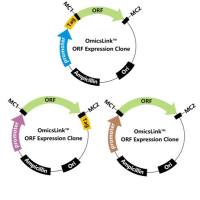Methods to Detect Clonal Gene Rearrangements in Lymphomas and Leukemias
互联网
459
The process of lymphocyte differentiation involves structural alterations of specific genes including those for the immunoglobulin (Ig ) and T-cell receptor (TCR ) antigen genes. This process occurs very early in the differentiation of B- and T-lymphocytes and involves an ordered program for splicing and rearranging segments of these genes, depending on cell lineage and level of differentiation. Specific DNA cutting and splicing enzymes result in the removal of a number of constant, joining, and variable segments of the Ig and TCR genes. Rearrangement of the VDJ and C segments occurs randomly during the process of B- and T-cell development; hence, the resultant gene rearrangement varies from cell to cell. This results in a unique rearrangement of these genes that encode for a specific Ig or TCR protein. A clonal population of lymphocytes, however, will have a specific molecular structure of rearrangements. Identification of this clonal population is central to the diagnosis of lymphomas and lymphocytic leukemias, because virtually all forms of lymphoid malignancies contain rearrangements of one or more antigen receptor genes. Furthermore, as a clonal expansion, an individual neoplasm will contain the identical rearranged gene throughout the population, serving as a unique clonal marker (1 ). However, it is important to be aware that lymphocyte clonality is not equivalent to malignancy (2 ). Benign and reactive conditions may show monoclonal rearrangements. Correlation with histology and immunophenotypic studies is important in order to establish a definitive diagnosis of malignancy. Similarly, the absence of clonal gene rearrangement may be seen in cases that appear malignant by histologic and immunophenotypic criteria. In these instances, it is important to be aware of technical limitations of the assays and sampling errors, which may result in a false-negative result.








